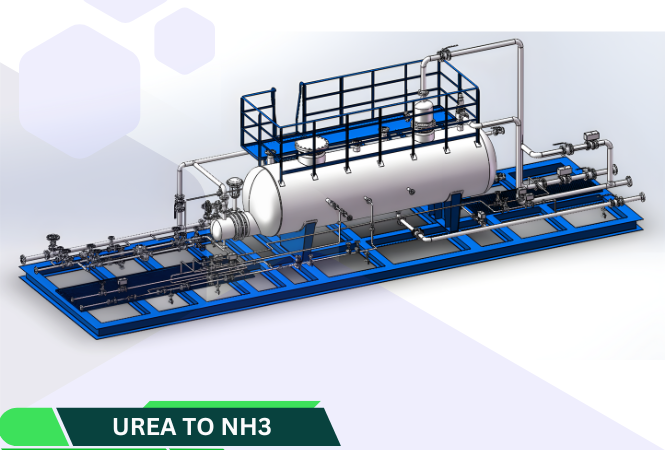
APPLICATIONS
Poly(methyl methacrylate) (PMMA), also known as acrylic or organic glass, is a highly versatile polymer with exceptional optical clarity, durability, and biocompatibility. Below is a detailed overview of its key applications across various industries:
1. Optical & Display Technologies
Transparent Panels & Light Guides:
Used in LCD/LED displays (e.g., smartphone screens, TV backlight modules) due to its 92% light transmittance, outperforming glass .
Serves as light diffusers in LED flat-panel lighting, enhancing brightness uniformity.
X-ray Detection & Imaging:
Plastic scintillators doped with rare-earth complexes enable low-dose X-ray detection (sensitivity: 2.22 μGy/s) for medical diagnostics.
2. Automotive & Transportation
Lightweight Components:
Car windows: PMMA reduces weight by 50% vs. glass while meeting safety standards (e.g., impact resistance).
Headlight covers: Resists yellowing from UV exposure.
Smart Train Windows:
Acts as an interactive touch layer in high-speed rail windows, enabling passenger-controlled tinting and video displays.
3. Medical & Biomedical Uses
Ophthalmology:
Intraocular lenses (IOLs): PMMA’s biocompatibility and clarity make it ideal for cataract surgery.
Orthopedics:
Bone cement: Fixates joint implants and spinal devices; modified formulations reduce heat release during curing.
4. Electronics & Communication
5G Devices:
Phone backplates: PC/PMMA composites replace metal for better signal transmission in 5G smartphones.
Plastic Optical Fiber (POF):
Used in short-distance data transfer (e.g., home networks) and decorative lighting.
5. Industrial & Consumer Goods
Signage & Architecture:
Outdoor billboards and skylights leverage PMMA’s weather resistance .
Household Products:
Audio equipment displays, bathtubs, and furniture due to scratch resistance and aesthetic flexibility
PROCESS METHOD
Polymethyl methacrylate (hereinafter called "PMMA'), a resin with the best transparency among
plastics, has long been used as windshields and in other similar applications. Since it is a material of a long his tory, various production methods depending on poly merization have been proposed.
Batch Suspension Polymerization that consists of polymerizing monomer particles batchwise in an aqueous dispersion and suspension containing a polymerization initiator. The process is still in wide use, but the batch operation usually requires a polymerization initiator (catalyst) which is eventually left unremoved in the product polymer, together with a suspending agent and the like, and the molecular weight distribution broadens. Also, the process necessarily involves such open stages as dehydration and drying which allow intrusion of impurities to mar the transparency of the product.
Batch Bulk Polymerization comprises first preparing a syrupy intermediate polymer by batch bulk polymerization, placing the syrup in between two sheets of glass and effecting polymerization, and, following the conclusion of the polymerization, peeling off the glass sheets to obtain a sheet of PMMA. The process again needs a polymerization initiator and, because the polymerization is carried out while the resulting polymer is allowed to cool naturally between the glass sheets, the polymerization temperature becomes nonuniform and the polymerization degree distribution spreads objectionably. The result is poor transparency of the product.
Continuous Bulk Polymerization that can theoretically afford the most transparent product. A polymerization initiator is used and a syrupy intermediate polymer is formed in a repolymerization vessel, and then in a second-stage polymerization vessel the intermediate is further polymerized to a final polymeri zation ratio d20.5. The two polymerization vessels use different polymerization temperatures, and this results in molecular weight distribution and compositional distribution as will be described later. Moreover, at d20.5, a gel effect accelerates the polymerization, and the rapid progress of polymerization causes partial temperature distribution and hence widened molecular weight distribution. Consequently, the product will not attain adequate transparency as an optical link material.
Continuous PMMA Polymerization Process
Precooling a monomer feed of methyl methacrylate (MMA), optionally containing ≤10 mol% of a thermally reactive comonomer (e.g., styrene)
Injecting the cooled feedstock under pressure into a reactor containing circulating polymerization mixture
Achieving instantaneous mixing and temperature control through: Vigorous mechanical agitation; Heat absorption by the precooled monomer (sensible heat cooling)
Maintaining reaction conditions to limit conversion to ≤50 wt% polymer content;
Continuously withdrawing the polymer-monomer mixture
Processing the output through: Preheating stage; Vacuum devolatilization to remove residual monomers
Final recovery of purified polymer product
PMMA BULK PROCESS
.png)

Key Steps of Continuous PMMA Polymerization Process
Precooling the Monomer Feedstock : Purpose: Lowers the temperature of MMA (or MMA/styrene mixture) to absorb the exothermic heat of polymerization. Typical Conditions: Temperature: 0–20°C (below ambient to delay premature initiation). Monomer composition: MMA + ≤10 mol% styrene (styrene enhances radical stability due to its resonance-stabilized intermediates).
Pressurized Feedstock Injection: The precooled monomer is forced into a reactor containing a circulating polymerization mixture under pressure. Reactor Pressure: 1–10 atm (prevents monomer vaporization and maintains homogeneity).
Instantaneous Mixing with Vigorous Stirring: Goal: Ensure uniform heat distribution and prevent localized hot spots. Shear Rate: High-speed agitators (e.g., turbine impellers) are used to achieve rapid mixing.
Cooling via Sensible Heat of Feedstock: The cold monomer feedstock acts as a heat sink, absorbing the exothermic heat (~54 kJ/mol for MMA polymerization). No external cooling is required, reducing energy costs.
Controlled Polymerization Rate (≤50%): The reaction is quenched early to: Avoid excessive viscosity (which hampers mixing/heat transfer). Limit autoacceleration (Trommsdorff effect). Output: A mixture of PMMA (~50% conversion) + unreacted monomers.
Vacuum-Driven Monomer Removal: The product is preheated (80–120°C) and fed into a vacuum vessel (e.g., flash evaporator). Vacuum Conditions: 5–100 mmHg to evaporate residual monomers. Monomer Recovery: Condensed and recycled back to the feedstock stream.
Featured Products
Downloads


Add paragraph text. Click “Edit Text” to update the font, size and more. To change and reuse text themes, go to Site Styles.
UREA TO AMMOUNIA
.png)
Add paragraph text. Click “Edit Text” to update the font, size and more. To change and reuse text themes, go to Site Styles.
WFF EVAPORATOR
.png)
Add paragraph text. Click “Edit Text” to update the font, size and more. To change and reuse text themes, go to Site Styles.

